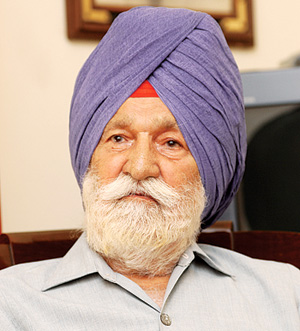INDIAN ARMED FORCES CHIEFS ON
OUR RELENTLESS AND FOCUSED PUBLISHING EFFORTS

SP Guide Publications puts forth a well compiled articulation of issues, pursuits and accomplishments of the Indian Army, over the years

I am confident that SP Guide Publications would continue to inform, inspire and influence.

My compliments to SP Guide Publications for informative and credible reportage on contemporary aerospace issues over the past six decades.
- Prime Minister witnesses 'Bharat Shakti' – a Tri-Services Firing and Manoeuvre Exercise in Pokhran, Rajasthan
- Interim Defence Budget 2024-25 — An Analysis
- Union Defence budget 2024
- Prime Minister Modi Commemorates Indian Navy Day in a Grand Ceremony
- Prime Minister Modi Flies in the LCA Tejas
- New Chapter in India-Italy Defence Ties
- Airpower beyond Boundaries
Arjan Singh: An iconic personality

The Panagarh airbase will be known as ‘Air Force Station Arjan Singh’, a tribute to a great hero
On April 15, Marshal of the Indian Air Force (IAF) Arjan Singh, DFC, turned 97 and not just the IAF but the country saluted the iconic personality. Befitting the celebrations, the Chief of Air Staff Arup Raha announced that the Panagarh airbase will be known as ‘Air Force Station Arjan Singh’, an honour unmatched. At the celebrations, a number of dignitaries were present including the former Prime Minister Dr Manmohan Singh and the three Service Chiefs among others.
Arjan Singh is the only officer of the IAF to be promoted to fivestar rank equal to a Field Marshal to which he was promoted in 2002. He was born in Lyallpur (now Faisalabad, Pakistan). His father was Risaldar Darbara Singh of the Hodson’s Horse who had served in Gallipoli during World War I and was wounded in Burma during World War II.
The Marshal of the Air Force was the first Indian Air Chief to lead a young IAF into war in 1965. He was hardly 44 years of age when entrusted with the responsibility of leading the IAF.
After education at Montgomery in Pakistan, he went to RAF Cranwell at the age of 19 for the Empire Pilot training course. His first assignment was to fly Westland Wapiti biplanes in the North-Western Frontier Province as a member of the No. 1 RIAF Squadron. After a brief stint with the newly formed No. 2 RIAF Squadron where he flew against the tribal forces, he later moved back to No. 1 Sqn as a Flying Officer to fly the Hawker Hurricane. He was promoted to the rank of Squadron Leader in 1944. He led the Squadron against the Japanese during the Arakan campaign, flying close air support missions during the crucial Imphal campaign and later assisting the advance of the Allied Forces to Rangoon. For his role in leading the Squadron in combat, he was awarded the Distinguished Flying Cross (DFC) in 1944. On August 15, 1947, he achieved the unique honour of leading a fly-past of over a hundred IAF aircraft in Delhi, over the Red Fort.
On promotion as Wing Commander, he attended the Royal Staff College at UK. Immediately after Indian independence, he commanded Ambala as Group Captain. In 1949, he was promoted as Air Commodore and took over as Air Officer Commanding (AOC) of an operational command, which later came to be known as Western Air Command. Arjan Singh had the distinction of having the longest tenure as the AOC of an Operational base, initially from 1949-52 and then again from 1957-61. On promotion as Air Vice Marshal he was appointed as the AOC-in-C of an Operational Command. Towards the end of the 1962 war, he was appointed as the Deputy Chief of the Air Staff and he became the Vice Chief of the Air Staff in 1963. He was the overall commander of the joint air training exercise ‘Shiksha’ held between the IAF, RAF and RAAF.
On August 1, 1964, as Air Marshal he took reins of the IAF, at a time when it was still rebuilding itself and was gearing up to meet new challenges. He was the first Air Chief to keep his flying currency till his CAS rank. Having flown over 60 different types of aircraft from pre-World War II era biplanes to the more contemporary, Gnats and Vampires, he has also flown in transport aircraft like the Super Constellation.
In 1965, when Pakistan launched its Operation Grand Slam, with an armoured thrust targeted at the vital town of Akhnur, he led the war and inspired the IAF to victory. The then Defence Minister Y.B. Chavan wrote: “Air Marshal Arjan Singh is a jewel of a person, quiet efficient and firm; unexcitable but a very able leader.”
He remained a flyer till he retired in August 1969, thereupon accepting Ambassadorship to Switzerland. He was Lieutenant Governor of Delhi from 1989 to 1990. He is a Padma Vibhushan awardee.
He has maintained high principles throughout his life and they include: one should be thorough in his profession; one should complete the job at hand to the satisfaction of everyone; one must have implicit faith in his subordinates; and ones efforts should be honest and sincere. He feels that if one adheres to these four principles, one can never go wrong.





